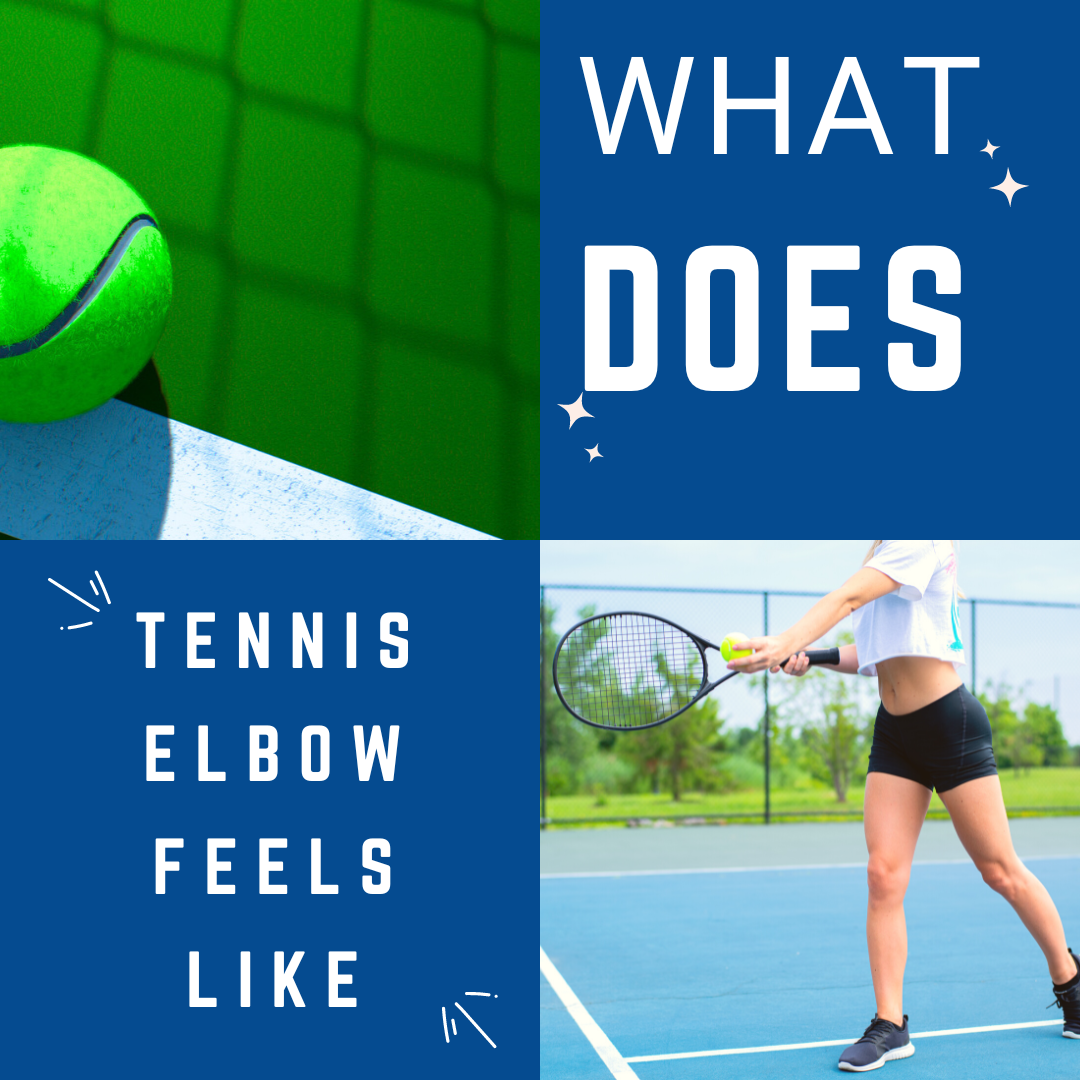Understanding Tennis Elbow: Symptoms, Causes, Feelings and Treatments
Tennis elbow, also known as lateral epicondylitis, is a common condition that affects many individuals, not just tennis players. But What does tennis elbow feel like? Despite its name, you don’t have to play tennis to develop this condition. It’s caused by repetitive motions of the wrist and arm, leading to inflammation and pain in the tendons that join the forearm muscles to the outside of the elbow. In this article, we’ll explore what tennis elbow feels like, its causes, and various treatment options available.

What Does Tennis Elbow Feel Like?
Tennis elbow manifests in various symptoms, primarily centered around the elbow and forearm. Understanding what does tennis elbow feel like can help you recognize if you’re experiencing tennis elbow:
1. Pain:

The most prominent symptom of tennis elbow is pain. It typically radiates from the outside of the elbow into the forearm and wrist. The pain may range from mild to severe and can be aggravated by activities that involve gripping or lifting.
2. Tenderness:
You might notice tenderness around the bony bump on the outside of your elbow, known as the lateral epicondyle. This area may feel sore to the touch.
3. Stiffness:
Some individuals with tennis elbow experience stiffness in the elbow joint, making it challenging to fully straighten or bend the arm.
4. Weakness:
As the condition progresses, weakness in the affected arm may develop. You might find it difficult to grip objects or perform tasks that require wrist and forearm strength.
5. Painful Activities:
Pain often worsens with specific movements or activities, such as shaking hands, turning a doorknob, or lifting objects, especially with the palm facing downwards.
Causes of Tennis Elbow
Understanding the causes of tennis elbow is crucial in both prevention and treatment. While repetitive motions are the primary culprit, certain risk factors increase the likelihood of developing this condition:
1. Overuse:
Engaging in repetitive activities that strain the forearm muscles and tendons, such as playing tennis, using a screwdriver, or painting, can lead to tennis elbow.
2. Improper Technique:
Poor technique while performing repetitive motions can increase the strain on the tendons, contributing to the development of tennis elbow.
3. Age:
While tennis elbow can affect individuals of any age, it’s more common in adults between the ages of 30 and 50, as tendons become less flexible and more prone to injury with age.
4. Occupational Factors:
Certain occupations that involve repetitive hand and wrist movements, such as carpentry, plumbing, or typing, pose a higher risk of developing tennis elbow.
5. Sports Activities:

While tennis is commonly associated with this condition, any sport or activity that involves repetitive arm motions, such as golf, squash, or weightlifting, can lead to tennis elbow.
Treatment Options
Fortunately, many treatment options are available to alleviate the symptoms of tennis elbow and promote healing. These treatments range from conservative measures to more invasive interventions, depending on the severity of the condition:
1. Rest:
Giving the affected arm adequate rest is crucial in allowing the inflamed tendons to heal. Avoid activities that aggravate the pain, and give your arm time to recover.
2. Ice Therapy:
Applying ice packs to the affected area can help reduce pain and inflammation. Ice therapy is particularly effective when applied for 15-20 minutes several times a day.
3. Brace or Splint:
Wearing a brace or splint can provide support to the elbow and reduce strain on the tendons. This is especially beneficial during activities that exacerbate the pain.
4. Physical Therapy:
A physical therapist can prescribe specific exercises to strengthen the forearm muscles and improve flexibility. They may also use techniques such as massage or ultrasound therapy to promote healing.
5. Medications:
Over-the-counter pain relievers, such as ibuprofen or acetaminophen, can help alleviate pain and reduce inflammation. In some cases, corticosteroid injections may be recommended for more severe pain.
6. Extracorporeal Shock Wave Therapy (ESWT):
This non-invasive treatment involves using shock waves to stimulate healing in the affected tendons. ESWT has shown promising results in relieving pain and improving function in individuals with tennis elbow.
7. Surgery:

In rare cases where conservative treatments fail to provide relief, surgery may be considered. Surgical options include removing damaged tissue or reattaching tendons to the bone.
FAQs (Frequently Asked Questions)
1. Is tennis elbow only caused by playing tennis?
No, while tennis can contribute to tennis elbow, any repetitive arm motion can lead to this condition. Activities such as typing, painting, or using hand tools can also cause tennis elbow.
2. How long does it take to recover from tennis elbow?
Recovery time varies depending on the severity of the condition and the effectiveness of treatment. With proper rest and treatment, many individuals experience significant improvement within a few weeks to a few months.
3. Can tennis elbow recur after treatment?
Yes, tennis elbow can recur, especially if the underlying cause, such as overuse or improper technique, is not addressed. Continuing with preventive measures and avoiding activities that exacerbate the condition can help prevent recurrence.
Conclusion
Tennis elbow can be a painful and debilitating condition, but with the right treatment and management strategies, most individuals can find relief and regain function in their affected arm. Recognizing the symptoms, understanding the causes, and exploring various treatment options are crucial steps in managing tennis elbow effectively. Whether it’s through rest, physical therapy, or more advanced interventions, addressing tennis elbow promptly can help minimize pain and promote healing, allowing you to return to your favorite activities with confidence.


3 thoughts on “What does tennis elbow feel like”